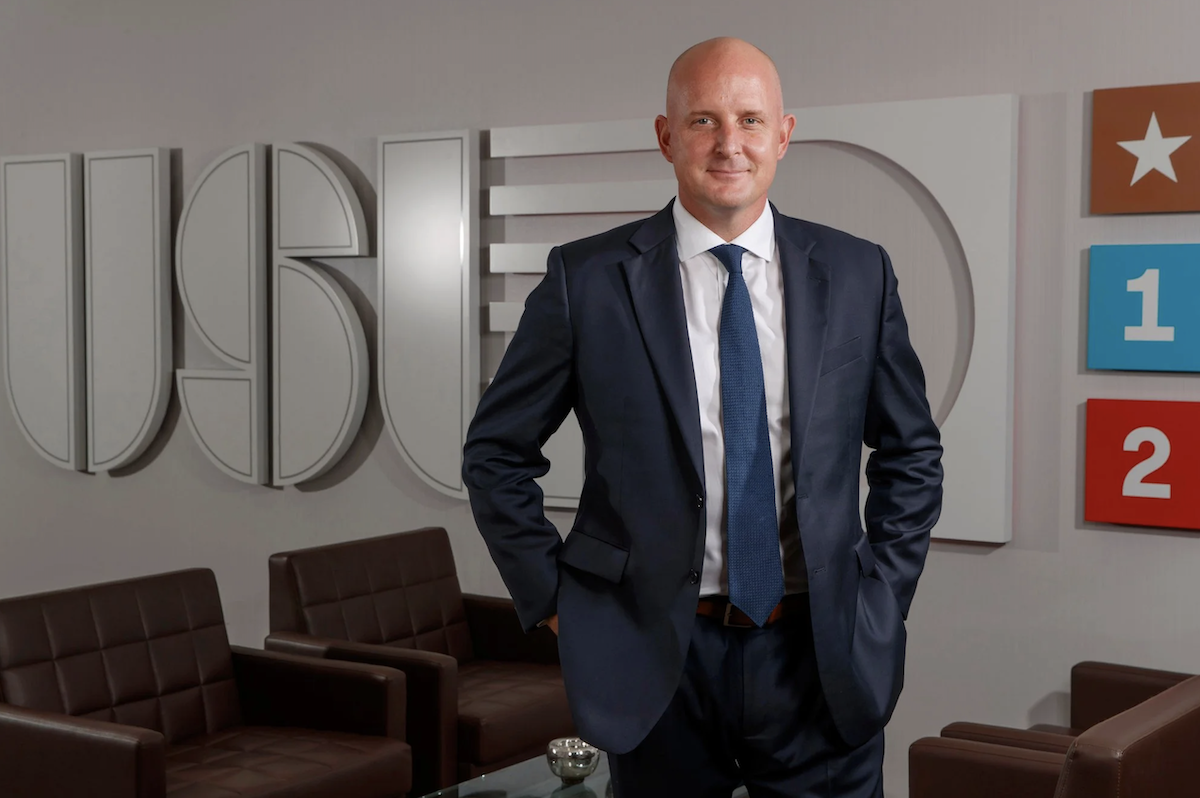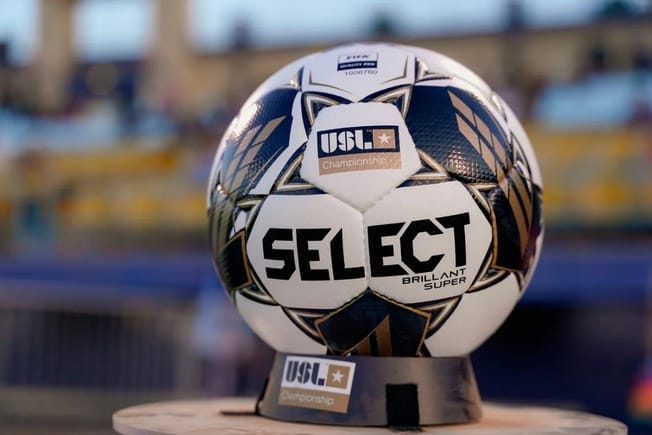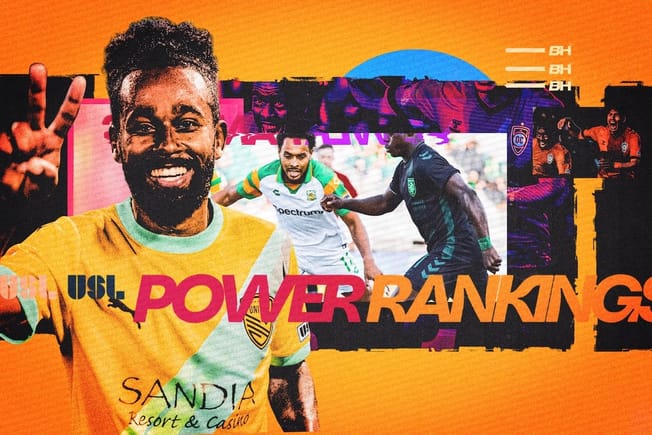As a young lower-division organization inside a misshapen pyramid, the United Soccer League has a unique opportunity to shape the changing American men’s soccer landscape.
And that landscape really is changing, albeit slowly. The United States is developing and exporting talent at a record rate – and the U.S. men’s national team is experiencing some of the benefits that come with that improving talent base. The domestic leagues are growing too, both in size and in their ability to impact soccer in the U.S. and elsewhere.
The USL’s professional lower-division leagues are already influencing the sport in the United States. Today, we’re looking at how they’re influencing soccer by asking the question, what is the USL supposed to be?
"IT'S TRIBAL. THAT'S YOUR CLUB."
To put it bluntly, the USL is big.
There are 27 teams currently competing in the second-division USL Championship and another 11 competing in the third-division USL League One. It’s only going to get bigger, too. USL President Jake Edwards told Backheeled that the Championship is aiming to be somewhere in “the 34, 36 range” in terms of teams and that League One will “ideally” end up with a similar number.
Although MLS affiliates are leaving the USL for new third-division league MLS NEXT Pro, multiple teams are scheduled to join the USL over the next year.
“We’re trying to build community clubs,” USL Sporting Director Mark Cartwright said in an interview with Backheeled. “If you go to Europe, if you go to Brazil or anywhere else, if you’re born in a certain area, if you live within a certain radius of a club, it’s tribal. That’s your club. That’s who you’re going to support,” Cartwright added later, citing those places as inspiration for the USL.
The USL Championship already has teams in a number of large to mid-sized markets, including Phoenix, San Diego, San Antonio, Detroit, Louisville, and Tampa Bay. Because it has both the Championship and League One, the USL also likely has room to expand into more markets than MLS does. With MLS NEXT Pro, MLS has its own lower-division league, but as of now, it only contains one independent club.
Heading to the Crescent City ⚜️
— USL Championship (@USLChampionship) July 14, 2022
The USL has entered an exclusive partnership with @uslnola, a group dedicated to bringing a professional soccer club to Greater New Orleans.
Details ↓
Maintaining and expanding a large geographical footprint is a critical part of the USL’s mission. In many ways, that approach has put its Championship and League One on the map. That focus on expansion isn’t going away any time soon, either: the USL is still spending time on finding new markets. But for the USL to truly make its mark on American soccer, there has to be something more.
The soccer has to improve – and so do the stories.
“To keep building that fan base, we’ve got to keep building the product on the pitch,” Cartwright said. “And that means making it better, improving it, having good stories.”
What kinds of stories is Cartwright referring to? He’s referring, at least in part, to the series of transfers and transfer reports that have recently surrounded the USL.
A ROLE PLAYER IN THE TRANSFER MARKET
It wasn’t long ago that Kobi Henry was in an MLS academy wondering what was next for his career.
As a United States’ youth international, Henry had big aspirations. Instead of working his way up through an academy in MLS like many of his peers, Brad Friedel, Henry’s agent and a former USMNT goalkeeper, helped him sign a professional contract with Orange County SC in the USL Championship.
Less than two years after Henry signed for Orange County, he signed another contract, this time, with Stade de Reims in France’s Ligue 1.
“I went over to Orange County and they had a pathway and plan for me to eventually get moved over to Europe,” Henry told Backheeled last month.
The USL to Europe pipeline is getting stronger. USYNT and former Orange County SC center back Kobi Henry is headed to Stade de Reims in France for a record fee that could rise into the “millions”.
— Backheeled (@Backheeled) June 14, 2022
More on that here, from @joeclowery.https://t.co/8Ohn7Uheu4
Henry’s move from the USL Championship to Ligue 1 earned Orange County a $700,000 fee that could rise to seven figures with various add-ons. Even without those add-ons, that $700,000 fee is still a record incoming transfer for the USL. A couple of weeks before Henry’s move, Diego Luna transferred from the El Paso Locomotive in the Championship to Real Salt Lake in MLS. Going back another few months, Jose Gallegos and Junior Flemmings moved from the Championship to Denmark and France, respectively. All of those deals involved incoming transfer fees for their former USL teams.
It’s happening slowly, but the USL is starting to become a recognizable role player in both the American and the global transfer market.
“This is not an overnight result,” Edwards said. “We’ve been working at this for quite some time now.”
Edwards referenced launching the USL Academy and hiring Cartwright, a former Premier League sporting director, as two key moves related to talent development. There’s also a realization among USL clubs that developing players can be a worthwhile investment – and that helping those players move on to better leagues can raise an organization’s profile.
Edwards continued, “When the teams look around the league and they’re seeing other teams with players moving on for seven figure transfer fees…I think it’s natural to question ‘what are they doing?’ and ‘how are they making that happen?’”
There’s a growing appetite in soccer for the next untapped transfer market. The United States has historically been one of those untapped markets, but things are changing quickly as more American players move in eight-figure transfer deals. MLS is getting closer and closer to being priced out from that untapped label.
But the USL? It certainly fits that description.
In many ways, this last year has been the USL’s first real foray into the global soccer landscape. The Championship and League One are just starting to break out of their current rhythms and into new territory. The transfer fees are small – no base fee has reached the million mark, yet – and the number of players who have moved is small, too. That said, as this current wave of players finds their footing in Europe, another wave will join them.
17-year-old center back Joshua Wynder, who plays for Louisville City, might be next. Then it could be teenager Cristian Nava, who’s created some real chances for New Mexico United this year. And the trend continues.
Last week, Diego Luna became the latest youngster to move from the USL to a higher level.
— Backheeled (@Backheeled) June 8, 2022
Which promising young player could be next? @USLTactics fills us in.https://t.co/vQsDe5jmRN
The perception around the USL is starting to change. Young players are beginning to see it as a legitimate pathway to Europe, which is still the “pot at the end of the rainbow”, as Cartwright put it.
“It’s gaining a lot more respect,” Henry told Backheeled. “[The USL] is now being looked at as a league that can really develop young players and give young players opportunities as well to see what it’s like playing with older guys and seeing how they cope with that. Then, eventually even getting chances to further their career and move on to new teams.”
Teams from some of the biggest leagues in the world are beginning to scour the USL for talent, too. At least some of those teams are going to go from scouting to inquiring and from inquiring to negotiating and from negotiating to signing a contract with a USL-developed player.
“We are seeing teams in some of the very top leagues in the world scouting our players and we are working with our teams to be ready for that,” Edwards said. “To be able to engage in that global transfer marketplace.”
At the moment, it’s one-way traffic for the USL in terms of transfer fees. The Championship and League One are starting to successfully develop talent and collect transfer fees for outgoing players. Eventually, the USL will start to pay fees of their own for players from other leagues, too. That step is still probably years away.
“I think [regularly paying transfer fees] is probably a little way off yet,” Cartwright said. Later, he added, “If you can go and get a million dollars for the next player and that can be reinvested into the club, it could be that you can go pay one hundred thousand euros or dollars for a top talent from somewhere else.”
Even one-way transfer traffic is a big step for the USL. It’s a step that helps its clubs make money, improve their on-field product, and tell good stories.
BIG CHANGES COMING?
When I sat down to talk with USL President Jake Edwards, one word kept popping up in our conversation.
Global.
Less than 20 seconds after I asked Edwards my first question, he used the word global in a response. It came up a minute or two later. And then again. And then again.
The USL is making inroads in a country that doesn’t think about soccer in the same way as most of the rest of the world. The United States doesn’t have an open-system, so teams can’t move up into a higher-level league without bringing a sizable expansion fee with them. While the USL is very much a part of that closed-system, becoming more like the rest of the soccer world is high on the organization’s to-do list. There’s an undeniable desire within the USL to differentiate its product and structure from the rest of American soccer.
With its two men’s professional leagues, the USL is in a position where adding promotion and relegation is a real possibility.
“Competition evolution and promotion/relegation and inter-league competition…are things that we’re working through at the moment to see how ultimately they drive engagement, they drive investment, and ultimately help with the popularity of the sport,” Edwards said. “We’re very much focused on that,” he added later. “I think that is also part of looking and feeling like the global structure of the game and how to differentiate our leagues domestically”
There’s that word again. Global.
Instituting a change like promotion and relegation between the Championship and League One isn’t a simple task. The financial investment is greater for owners of USL Championship teams than it is for owners of USL League One teams, which makes mixing teams complicated. Still, the USL appears committed to pushing towards promotion and relegation before 2026.
“My hope is if we’re able to make some of these changes,” Edwards said, ”it would be before the (2026) World Cup, so when the eyes of the world are on these shores, we are in a format that does look familiar to the rest of the world.”
The USL is continuing to explore a calendar change, as well. Its leagues currently use a spring-to-fall schedule, rather than the fall-to-spring cadence that major European leagues use. Winter weather issues would cause problems for the USL, as would the fact that their men’s leagues are already in that spring-to-fall pattern. The timing of when and how to change course to avoid losing a sizable part of a season is tricky.
Adjusting the calendar could still be in the cards, though. It’s “being looked at”, according to Edwards.
These major structural changes aren’t being considered to appease a vocal population of fans who want American soccer to blend in with the rest of the world. No, the USL is pursuing some of these shifts as a way to add value to their leagues.
It can be difficult for second and third-division leagues to meaningfully participate in the discussions surrounding their sport. But what happens when those leagues are playing at a totally different time to the first-division league? And what happens when those leagues have higher stakes with teams moving up and down between them?
People might just start talking. And really, isn’t that what every brand, organization, and league wants?
We started this story with a single question. What is the USL supposed to be?
The answer to that question now seems clear. It’s supposed to be an organization full of teams that help fill in the large soccer gaps in the United States. Over the last decade, expansion into new markets and communities has opened the door for the USL to start populating the U.S. with more teams. Over the next decade, expansion is still going to be a priority.
But it’s not only about expansion anymore. To build roots and grow in their current markets – and not just out into new markets – the USL has to grow into an interactive player in the global soccer landscape. That means becoming more relevant in the eyes of domestic fans in USL cities and more relevant in the eyes of fans outside those cities.
By finding ways to be different from the rest of the U.S. and, at the same time, to be like the rest of the world, the USL can build that relevance. By developing players, selling them, and spending money on players coming into the league, the USL can better its on-field product. That builds relevance, too.
Like the rest of American soccer, the USL has a long way to go. But knowing who you are is a great place to start.







Comments